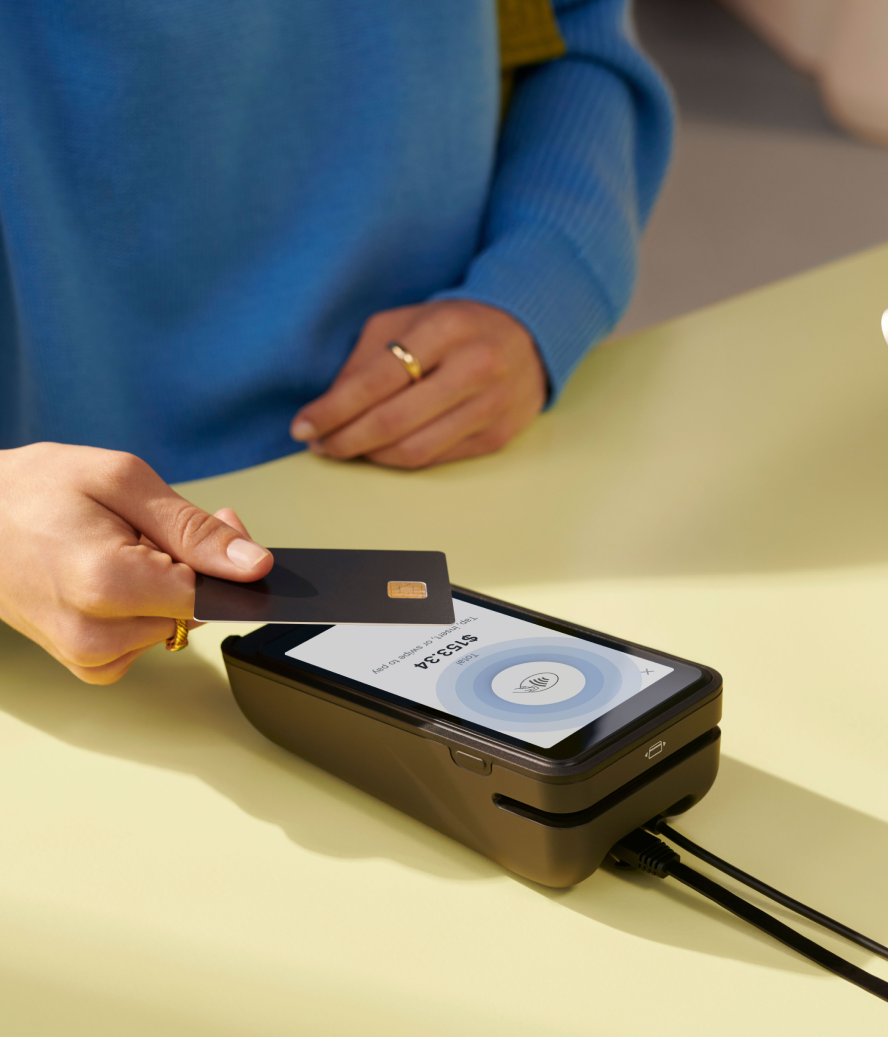Physical retail is thriving—43% of consumers now shop in-store weekly, outpacing online purchases. But today's shoppers move fluidly between digital and physical worlds, expecting seamless experiences everywhere.
Most retailers aren't ready. Their reality? Store staff juggling multiple systems. Websites that can't talk to POS. Inventory data trapped in silos. Every disconnected process costs time and erodes profit margins.
True unified commerce changes this equation. When all your retail data flows through one system, you unlock new efficiency in inventory, checkout, store operations, and customer insights. Here's how leading retailers are using unified commerce to transform their operations and drive growth.
What is retail efficiency?
In theory, you achieve peak retail store operational efficiency when your five S’s—stock, space, staff, standards, and systems—are perfectly in sync. The goal is simple: boost profitability and customer satisfaction by streamlining every step of your physical store’s operation.
In order to deliver seamless experiences while growing sustainably, retail operations focus on eliminating waste—whether it's excess inventory, redundant tasks, or disconnected systems.
In the past, efficient retail operations were all about cutting costs and boosting productivity. Trim the blubber, streamline processes, and squeeze out every last drop of profit. Today, efficiency is more holistic. In our omnichannel world, true retail operational efficiency comes from unified, connected operations—because customers expect seamless, unified shopping experiences.

But when your sales, inventory, and customer data are trapped in disconnected tools and systems, your teams waste time switching contexts, reconciling mismatched data, and firefighting problems rather than proactively improving operations.
Why a unified commerce foundation is important
When all your systems finally speak the same language, magic happens. No more hopping between apps or chasing down inventory updates—your team gets one clear, real-time snapshot of inventory, sales, customers, and operations. Those frustrating tasks, like manually updating spreadsheets or hunting down mismatched reports, vanish. Poof.
Instead, your employees spend their day doing what actually matters: helping customers, closing sales, and growing your business.
Take Oak + Fort, for example. By unifying its commerce operations with Shopify, the retailer turned what used to be a three-step order management process into a single step. This simple shift had a huge payoff.
"This change has reduced 50 hours/week in headquartered staff time, 40 hours/week with customer experience teams, and 10 hours/week from IT support," says Jennifer Pearson, head of technology and ecommerce. "Across our 42 retail locations, we're also saving 80 hours/week of shop floor employee time."

How to improve retail operational efficiency
Let’s break down exactly how you can tackle each of the five S’s—stock, space, staff, standards, and systems—to optimize your retail store operations.
1. Get the right commerce platform
Think about your current commerce setup. Can your store associate see a customer's online purchase history? Does your ecommerce manager know which products sell fastest in stores? Can your marketing team target customers based on in-store browsing patterns? If not, you're working with blinders on.
Legacy systems hold you back. They trap your data, demand constant maintenance, and cost more than they deliver. Yet a unified commerce solution like Shopify pulls all your critical data—inventory, customer, sales—into one centralized hub. This eliminates disconnected tools, reduces data errors, and provides clarity at every touchpoint.
Data from EY found that retailers who use unified commerce platforms see significant improvements in all aspects of their business:
- Compared to disconnected systems, unified platforms offer 22% better total cost of ownership.
- Shopify's POS solution provides an 8.9% equivalent uplift in sales annually on average.
- Shopify's unified approach to data management leads to a substantial decrease in the time technical resources spend on maintenance, eliminating the need for middleware by up to 60%, or approximately $20,000, per year.
From a single, intuitive admin panel, you can control every aspect of your operation without facing increased complexity as you expand. You'll optimize your digital storefront, seamlessly sell through popular social platforms like Instagram and Facebook, and even explore retail models such as dropshipping without needing additional software and patchy middleware.
Plus, a unified infrastructure like Shopify creates a "write-once, deploy-everywhere" capability for updates and features to make sure you optimize your retail store operations without much downtime.
2. Unify your data across sales channels
Separate systems create inefficiency because data lives in silos. Teams make decisions with incomplete information, while opportunities vanish before anyone notices them.
Consider inventory forecasting with fragmented data. You order too much… or too little. Either way, you lose money. Marketing doesn't know which products need promotion. Finance can't accurately project cash flow. Customer service lacks visibility into order status.
Centralizing sales, inventory, and customer data in one platform eliminates confusion and boosts productivity. Staff no longer waste time hunting down errors or reconciling mismatched spreadsheets. Instead, your team spends that reclaimed time innovating, selling, and serving customers.
3. Automate cross-channel inventory management
Manually updating spreadsheets, checking POS systems, and syncing online inventory is slow and error-prone.
Automating inventory management across all your channels—online, in-store, and warehouse—helps you keep inventory levels accurate in real time. For example, if a customer buys a pair of sneakers online, the in-store inventory updates instantly, making sure no customer walks out disappointed because of inaccurate stock counts.
Automation also helps maintain optimal inventory levels and prevent stockouts that drive customers away. With the Stocky app for Shopify POS, you can generate stock reports to identify the minimum threshold depending on sales patterns and vendor lead times. The automated IMS will raise a purchase order with the appropriate supplier whenever the conditions are met.

4. Centralize customer data
Unified customer data allows you to quickly identify VIP shoppers, tailor promotions, and proactively anticipate customer needs. Instead of guessing, you know exactly what your customers prefer, enabling faster decisions, targeted communication, and stronger relationships.
Shopify’s unified customer profiles give you a single, clear view of every customer interaction. Each time someone browses your site, places an order, or contacts support, Shopify logs it all in one place.
Personal stylists at Diane Von Furstenberg reference this data to personalize the retail experience. And because its POS system is portable—not fixed to the checkout desk—store associates have the freedom to assist walk-in customers anywhere on the shop floor.
“One of our favorite Shopify POS features is adding notes to a customer’s profile to store information like their favorite colors, ideal size, or a product they’re excited about from our new collection,” says assistant store manager Joanna Piccio. “Those qualitative insights really help us really make them feel like we’re their personal stylist the next time they shop with us.”
5. Create connected customer experiences
Your customer bought online. They want to return in-store. Simple, right? Not with disconnected systems. Your store associate can't find the order, the return policy differs between channels, and the customer becomes frustrated.
A unified commerce platform like Shopify eliminates these friction points. Every transaction lives in one system, every team member follows the same process, and every customer receives consistent service regardless of how they choose to shop.
Plus, implementing unified standards, such as offering seamless buy-online-pickup-in-store (BOPIS), guarantees seamless shopping experiences. Imagine a customer ordering a jacket online at lunch and effortlessly picking it up from your store that afternoon—without confusion or waiting.
Mandalyn Renicker, the owner of Offbeat Bikes, faced multiple obstacles in her retail operations. Inventory tracking was completely manual and time-consuming. Online and in-store systems failed to communicate effectively. Customers experienced difficulty navigating product pages. Administrative work was consuming valuable time that could have been spent growing the business.
Shopify transformed Offbeat Bikes' entire retail approach. It implemented real-time inventory tracking across all sales channels, created a robust BOPIS functionality, and developed intuitive product collections that made browsing easier. Shopify also simplified the entire checkout process for customers.
The impact of implementing Shopify was immediate and powerful:
- Accessory sales increased by 400%.
- Kids' bike sales doubled.
- The retail store saved 4+ hours monthly on inventory management.
“Shopify allows me to do what I actually care about most, which is making sure my customers are having a great experience when they’re interacting with my shop in any way, whether that’s online or through social media or when they come by in person,” Mandalyn says.
6. Deploy predictive analytics
Predictive analytics helps you anticipate exactly what you’ll need, when you'll need it—before you feel the effects of not having it.
Stockouts are the most practical example. Say rain boots sold unusually quickly during a wet spring season. Predictive analytics notices this trend early, prompting your team to reorder stock ahead of time, instead of scrambling after inventory runs out. This proactive approach boosts sales, reduces overstocks, and prevents missed opportunities.
You’ll need access to real-time data synchronization to make accurate forecasts with predictive analytics. Shopify is uniquely positioned to do this—it’s the only platform to natively build POS and ecommerce on the same operating system. Any data you collect feeds back to the same platform in real-time—without patchy middleware and complex integrations—no matter the origin source.
7. Create personalized marketing campaigns
Mass marketing died years ago. Today's customers don’t just expect relevance, they demand it.
A unified data platform like Shopify collects a customer's online browsing history, in-store purchases, loyalty status, and support interactions and merges into one comprehensive profile.
Say a college student buys textbooks at the start of the fall semester. Your system notes he also purchased highlighters and a planner. Before spring semester begins, he receives a targeted email featuring upcoming required texts for his major, study accessories on sale, and a discount code for digital planners. The timing feels helpful, not intrusive, because it's based on his actual academic cycle and previous purchasing behavior.
💡Pro tip: Show your marketing team how a single customer profile transforms their work. Introduce them to Shopify Audiences, where shopping patterns across thousands of stores identify new customers primed to purchase your products.
8. Train your staff
New employee training takes forever. Five systems to learn, six passwords to remember, four store managers showing different processes—and two weeks before they can actually help a customer independently.
Retail employee turnover is already a significant issue, with costs ranging from 1.5 to 2 times an employee's annual salary. This can lead to a vicious cycle: poorly trained staff contribute to a deteriorating customer experience, with 64% of shoppers attributing "poorly trained or prepared staff" as a key driver of poor CX. One common culprit? An overly complex POS system that isn’t intuitive or easy for staff to use.
The POS system previously employed by pet supply retailer Tomlinson's, for example, required too much manual work and slowed down store operations. Because of this, new staff had a hard time learning the POS, checkout times were longer, and processes were complicated—which hurt productivity and customer satisfaction.
After switching to Shopify POS, Tomlinson's reduced staff training time by 32%, improving its onboarding process and overall training efficiency.
“There was no downtime when we made the switch to Shopify POS,” says Kate Knecht, owner and operator. “We were able to train in a sandbox environment for a month and a half prior to the launch to allow our team to get used to the system.”

9. Automate your workflows
Look at your sales floor now. That display table consuming 20% of your prime real estate: How much does it generate in sales? You don't know. You're guessing. Your current systems can't tell you.
Smart retailers track performance by zone. They know exactly which areas deliver the highest return per square foot. They place high-margin items in high-traffic zones. They rotate displays based on data, not hunches.
Automated workflows transform space management completely. Replenishment alerts trigger automatically when shelves need restocking. Say adios to empty displays killing sales and backrooms overflowing with excess inventory—your system monitors stock levels continuously. It alerts staff precisely when to move products from storage to the selling floor.
This automation keeps your premium floor space productive constantly while minimizing wasted backroom storage.
Do more with less using Shopify
The numbers tell a powerful story. Retailers who switch to unified commerce platforms like Shopify see transformative cost-savings. But the real impact goes beyond numbers. When your entire retail operation runs on one unified platform, you eliminate the friction that holds businesses back. No more disconnected systems. No more data silos. No more missed opportunities.
Just one powerful platform that gives you complete visibility into your inventory, customers, and sales—everywhere you sell.
Retail operational efficiency FAQ
Which are elements of retailer operational efficiency?
The key elements of retailer operational efficiency include stock management, space optimization, well-trained staff, consistent operational standards, and integrated technology systems.
What are the 3 factors of operational efficiency?
Research shows three key factors significantly shape operational efficiency:
- Human factors: Employee training, motivation, and skill level directly impact your store’s efficiency.
- Organizational factors: Clear processes, management structures, and unified operations influence how smoothly your business runs.
- Technological factors: Integrated systems and reliable technology determine how effectively you manage resources, inventory, and customer data.
What are examples of operational efficiency?
- Automating inventory tracking.
- Offering seamless omnichannel shopping experiences.
- Predictive analytics for demand forecasting.
- Unified customer data for targeted marketing.
How do you calculate retail efficiency?
Retail efficiency can be calculated using metrics like inventory turnover rate, sales per square foot, labor cost ratios, and customer satisfaction ratings.





